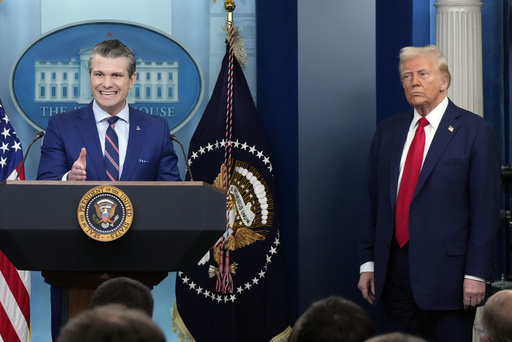
The Pentagon is preparing to deploy at least 1,000 more active-duty personnel as part of President Donald Trump’s increasing efforts to intensify immigration enforcement, U.S. officials disclosed on Friday.
Approximately 500 of the additional troops are expected to be a command unit from the 10th Mountain Division based at Fort Drum in New York, assigned to the southwestern border. Concurrently, another 500 Marines are slated to be sent to Guantanamo Bay, Cuba, where some migrants will be detained.
Officials, who requested to remain anonymous due to the sensitive nature of the situation, indicated that discussions regarding troop deployments are ongoing, and the numbers could potentially rise as plans evolve.
Efforts at the Pentagon are rapidly mobilizing in response to Trump’s executive orders that were enacted shortly after he took office on January 20. Last week, the first wave of 1,600 active-duty troops was dispatched to the border, marking the beginning of a broader military involvement in immigration enforcement.
This military engagement illustrates Trump’s commitment to enhancing the military’s role in his administration’s strategy to curtail border crossings and facilitate the return of detained migrants to their native countries.
The troops assigned to the border are anticipated to assist in installing concertina wire barriers and provide critical transportation, intelligence, and overall support to Border Patrol agents. Meanwhile, those heading to Guantanamo Bay will help prepare the facility for potential new arrivals and undertake various support tasks.
During an appearance on “Fox and Friends” on Friday morning, Defense Secretary Pete Hegseth expressed confidence that the U.S. could accommodate “thousands of individuals in tents, secured in places at Guantanamo Bay.”
However, he cautioned that there is also a risk of housing dangerous individuals, including hardcore criminals or members of violent gangs at the facility. Consequently, the Defense Department is making arrangements for detention spaces at Guantanamo that are comparable to maximum-security prisons for temporary holds.
Officials revealed throughout the week that further troop deployments to reinforce the southern border could be implemented swiftly in the upcoming days, possibly totaling as many as 10,000 personnel.
Prior to Trump’s return to office, about 2,500 Guard and Reserve members were already consistently stationed at the border. Given the extensive 2,000-mile stretch along the Mexican border, additional forces will be essential for erecting concertina wire barriers and bolstering Border Patrol operations.
As part of the recent deployment, around 1,100 Army soldiers and 500 Marines have already reached El Paso, Texas, and San Diego, with many beginning their assigned tasks.
Additionally, the military is facilitating the transportation of over 5,000 detained migrants through military aircraft for deportation flights coordinated by the Department of Homeland Security. Some of these individuals are expected to be sent to the detention facility located at Guantanamo Bay.
This Wednesday, Trump announced plans for his administration to transport the “worst criminal aliens” to Guantanamo Bay, directing the Pentagon to prepare to accommodate as many as 30,000 migrants. He noted that some migrants cannot be reliably returned to their home nations.
“Some of them are so bad that we don’t even trust the countries to hold them because we don’t want them coming back, so we’re gonna send ’em out to Guantanamo,” Trump stated.
This would not be the first instance of migrants being held at Guantanamo; U.S. authorities have previously detained migrants apprehended at sea in a facility known as the Migrant Operations Center, which has housed individuals from Haiti and Cuba.

